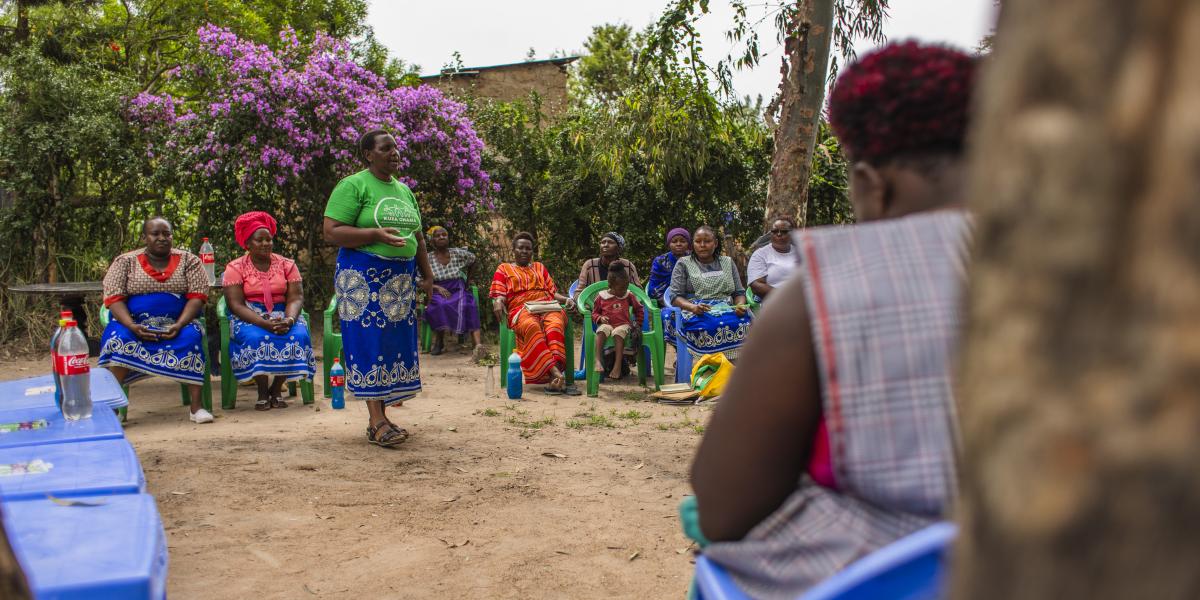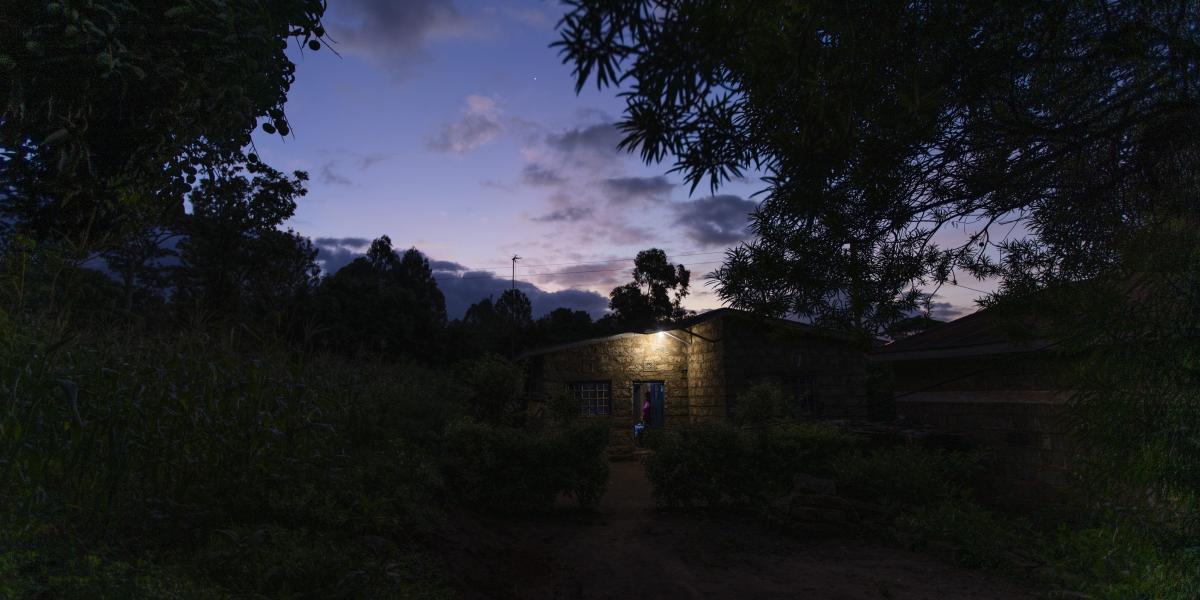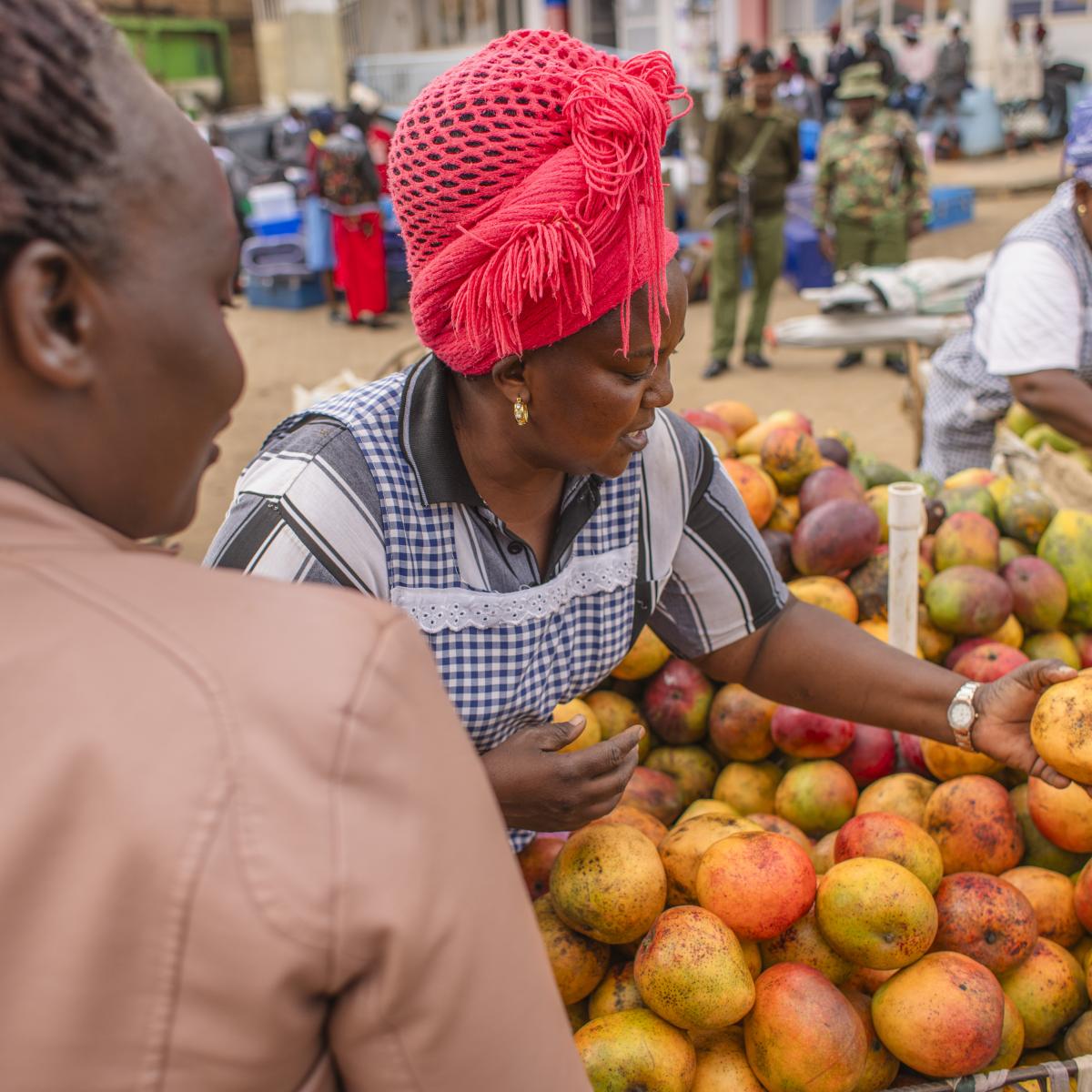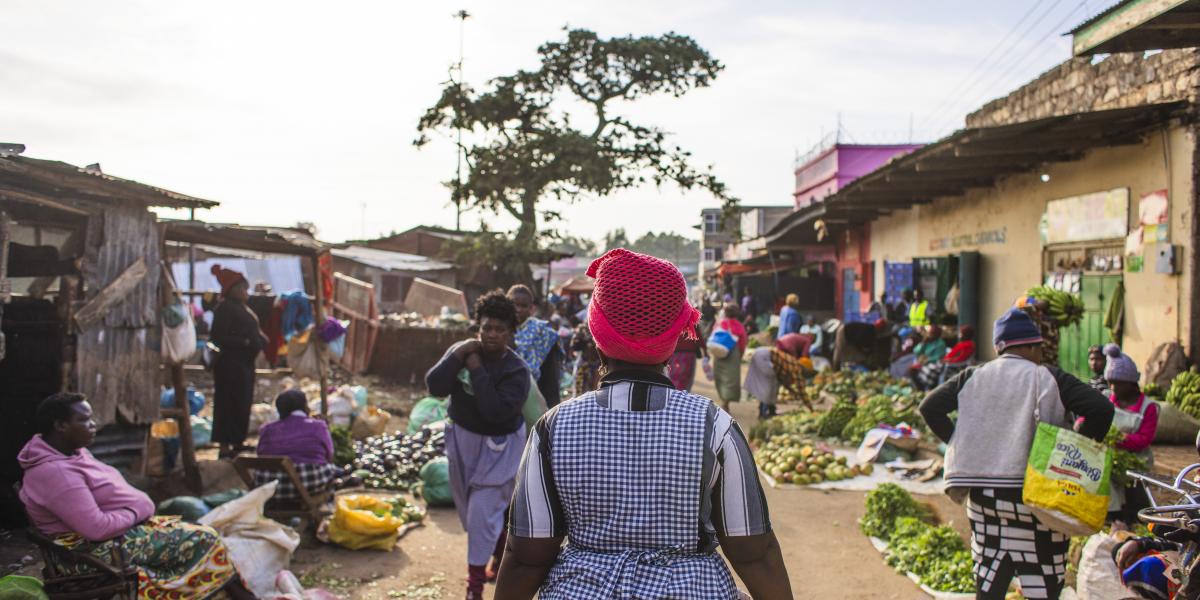Connecting Ruth
Closing the gender digital divide in Kenya
Narrative by Angela Rucker, USAID | Photos and video by Bobby Neptune for USAID
April 2024
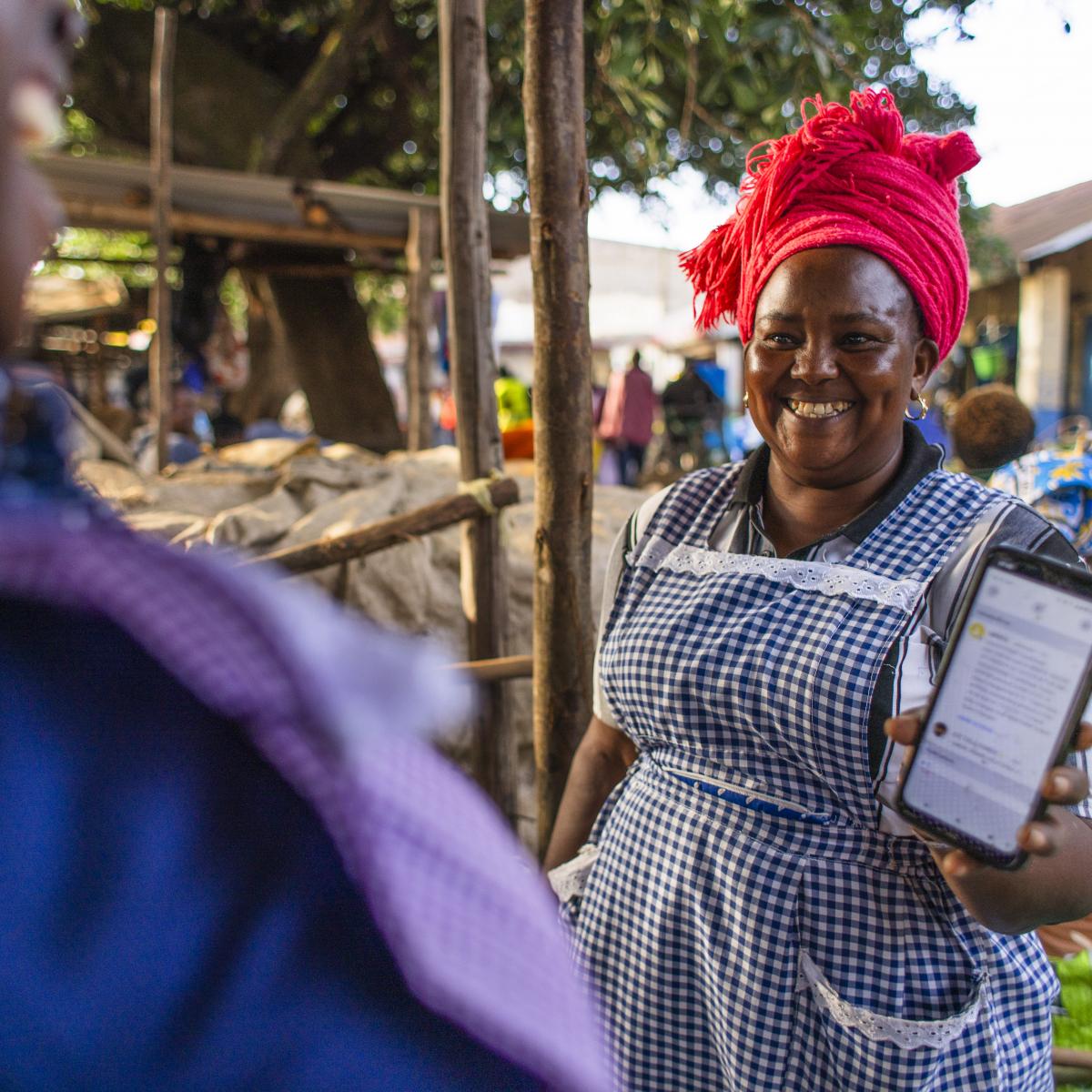
Ruth Munyiva’s mobile phone is an investment in her expanding business, a lifeline to her husband and three children, and perhaps most importantly, a door to the digital world of opportunities.
“When mobile payments were introduced, it helped me as a businesswoman. It has been a blessing to me,” says Ruth, an energetic produce seller at a busy market in Tala, Machakos County, Kenya.
“Life has become digital. Before we were analog.”
What changed in Ruth’s life—and for other women like her in Kenya—stems in part from a partnership between USAID, Fintech pioneer M-KOPA, and Microsoft Airband.
In 2020, M-KOPA began promoting sales of its affordable pay-as-you-go smartphones, first in Kenya and then in other countries in East and West Africa. Fast forward to today and M-KOPA now has more than 3 million customers using smartphones.
But there is a problem: More men purchase smartphones than women.
Bridging this gender digital divide has become the joint project of the three partners—and a village of women in countries around the world. Together they are addressing the social and economic constraints that often prevent women from purchasing smartphones by accelerating smartphone adoption, hiring and training more female sales agents, and incentivizing sales to women customers.
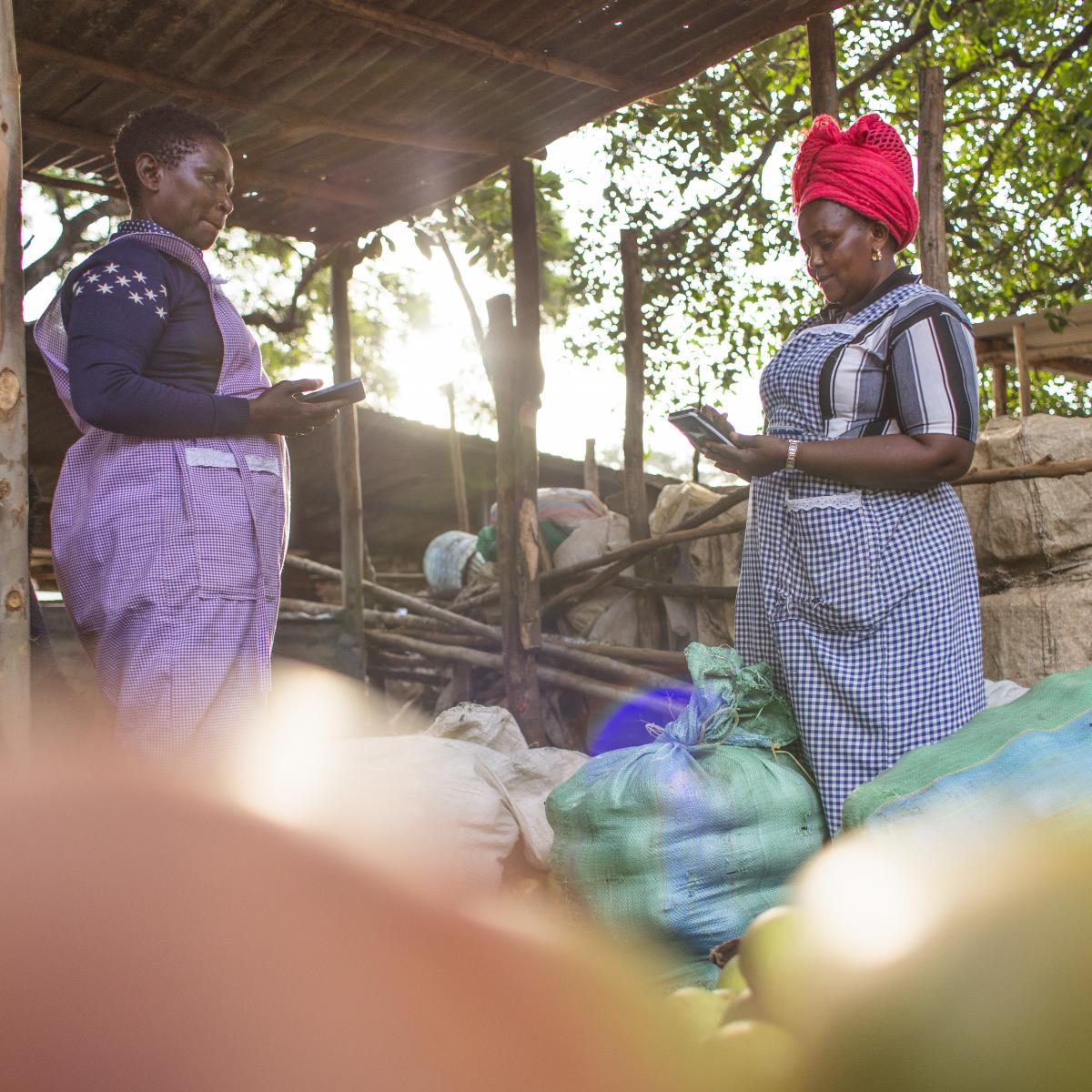
Entrepreneurs like Ruth are leading the way.
For more than a year she has been accepting payments from her vendors and customers electronically via her Android phone. She shares her market-day menu of mangoes, avocados, oranges, thorn melons, and more with her WhatsApp and Facebook followers. And she accepts online orders and provides curbside pickup for produce deliveries.
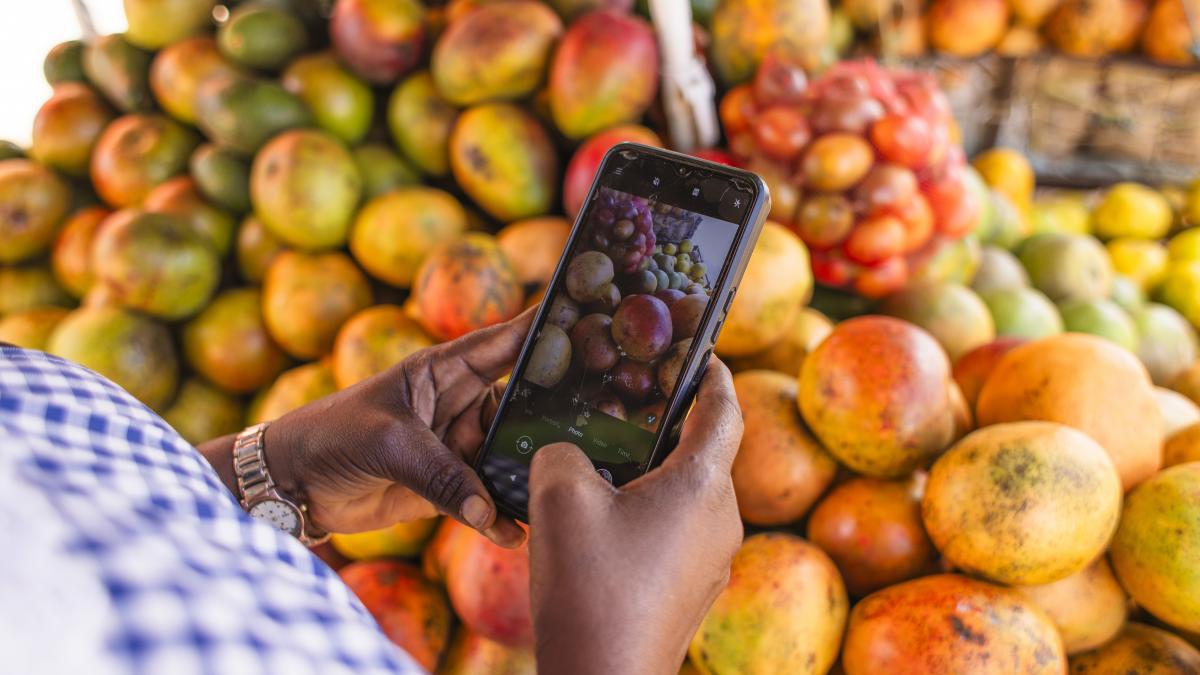
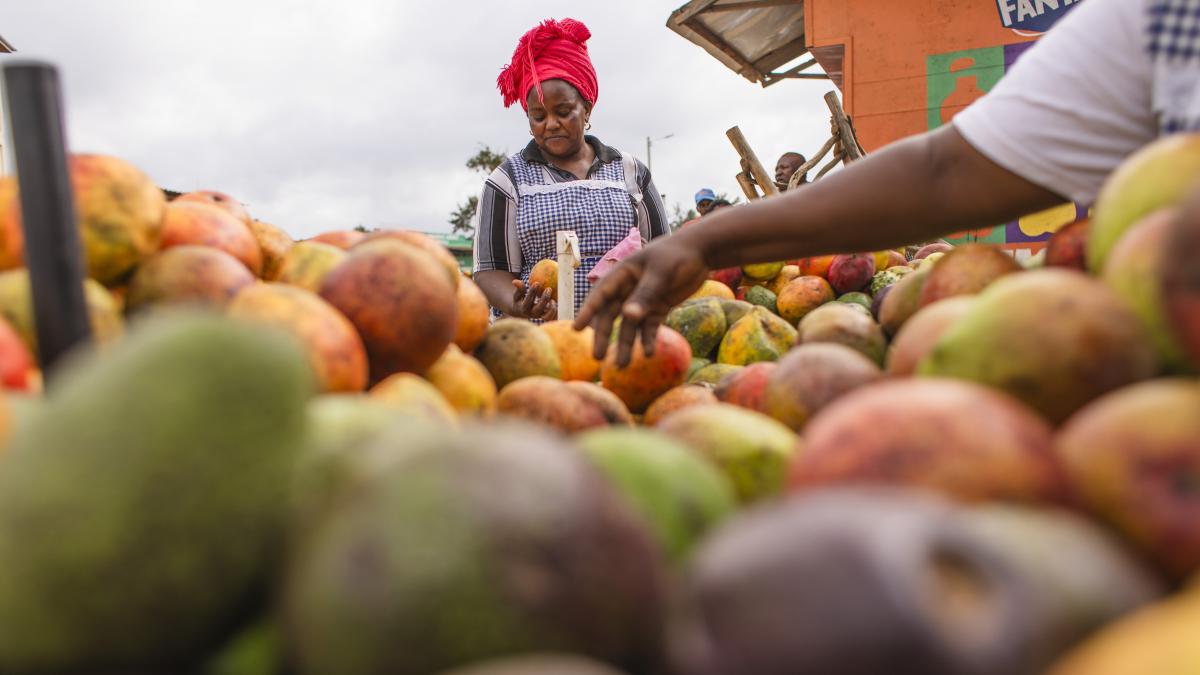
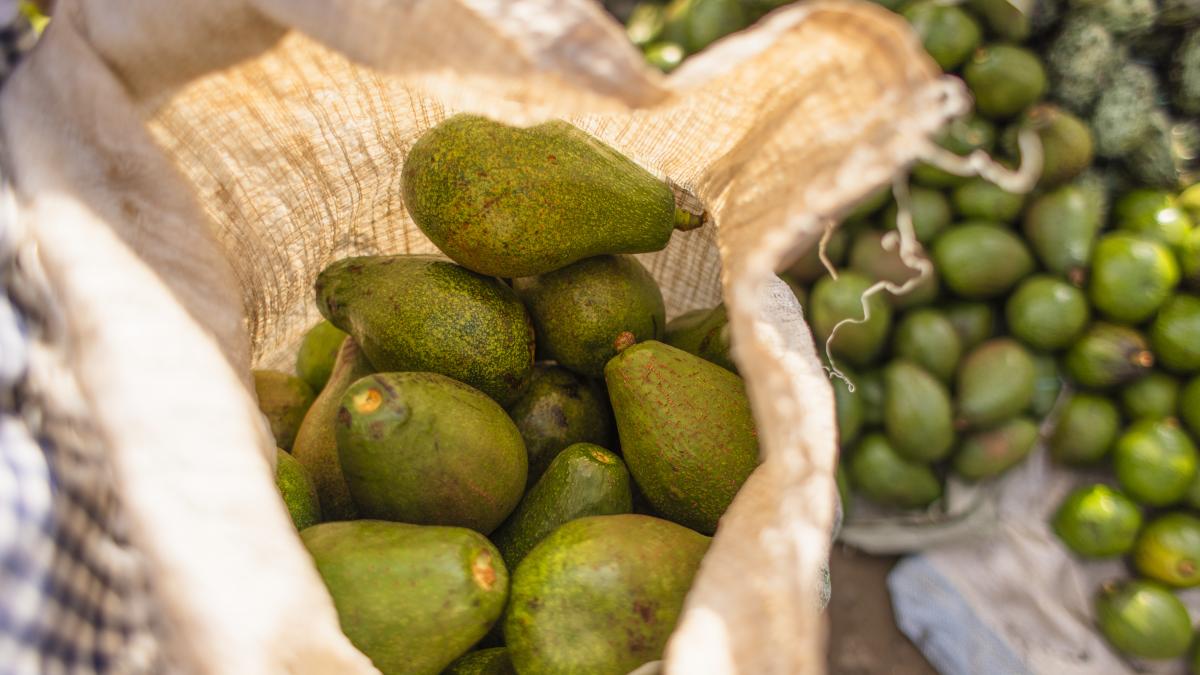
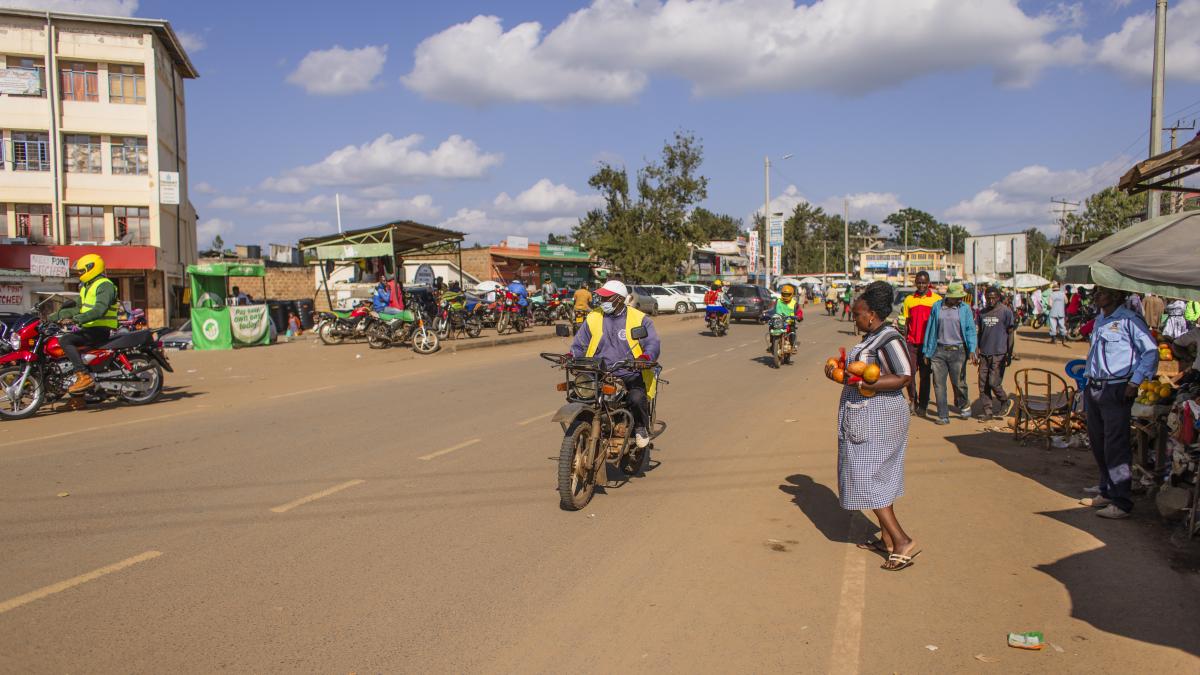
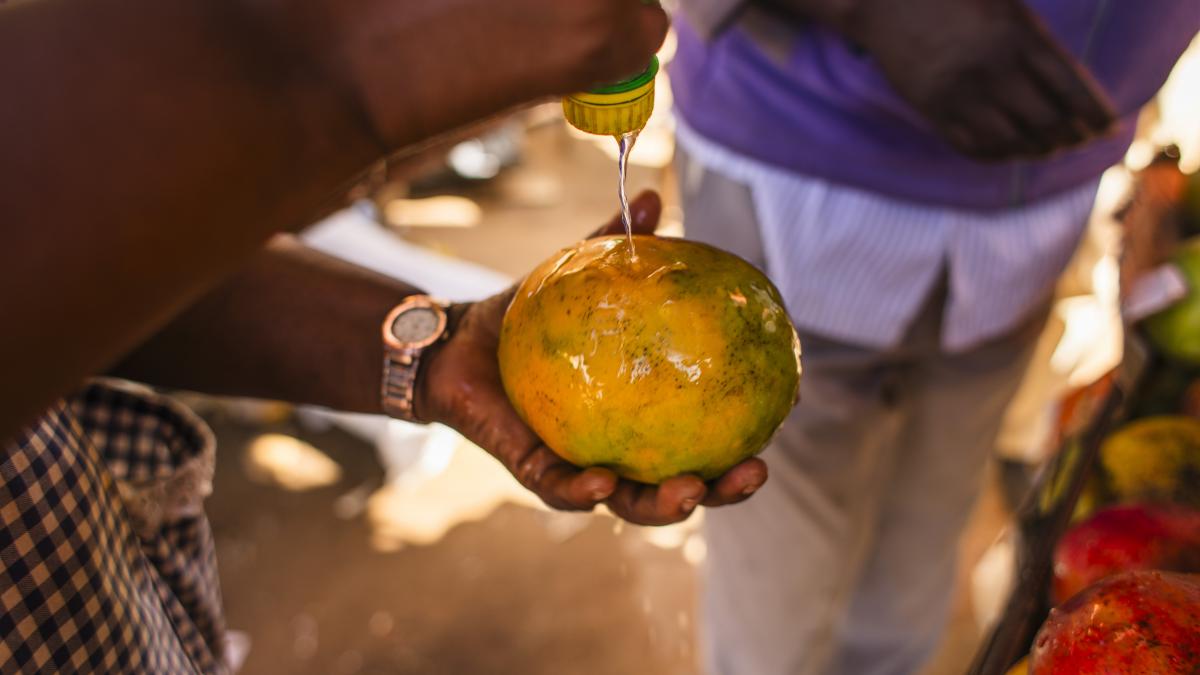
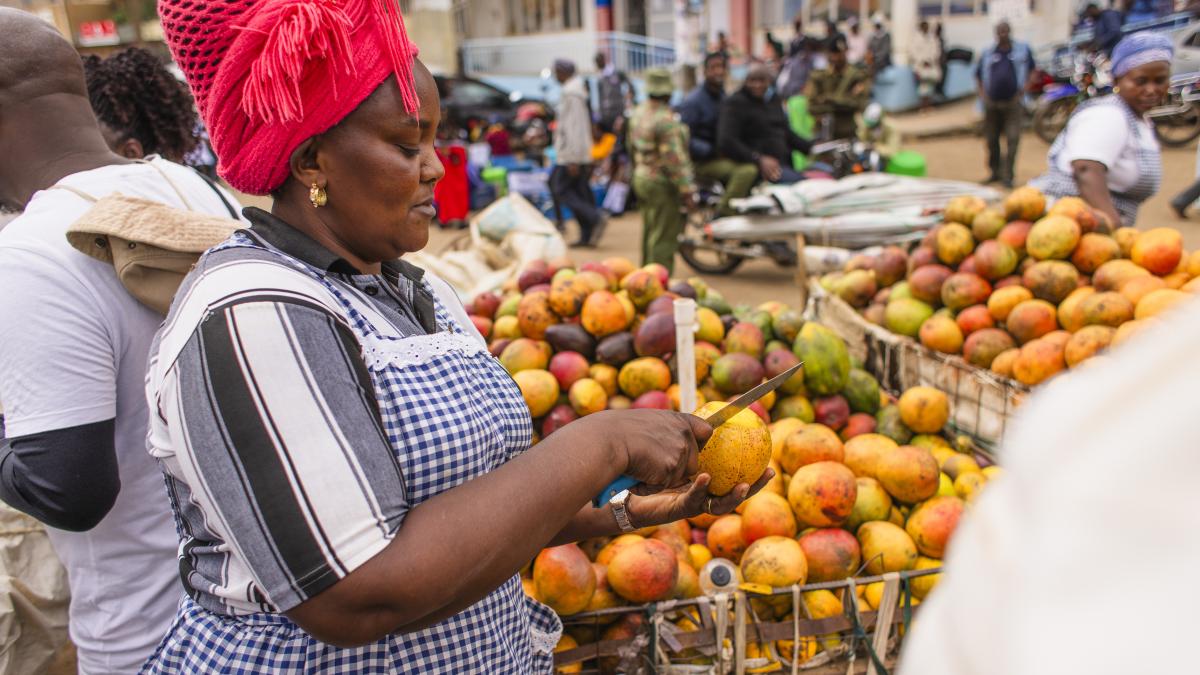
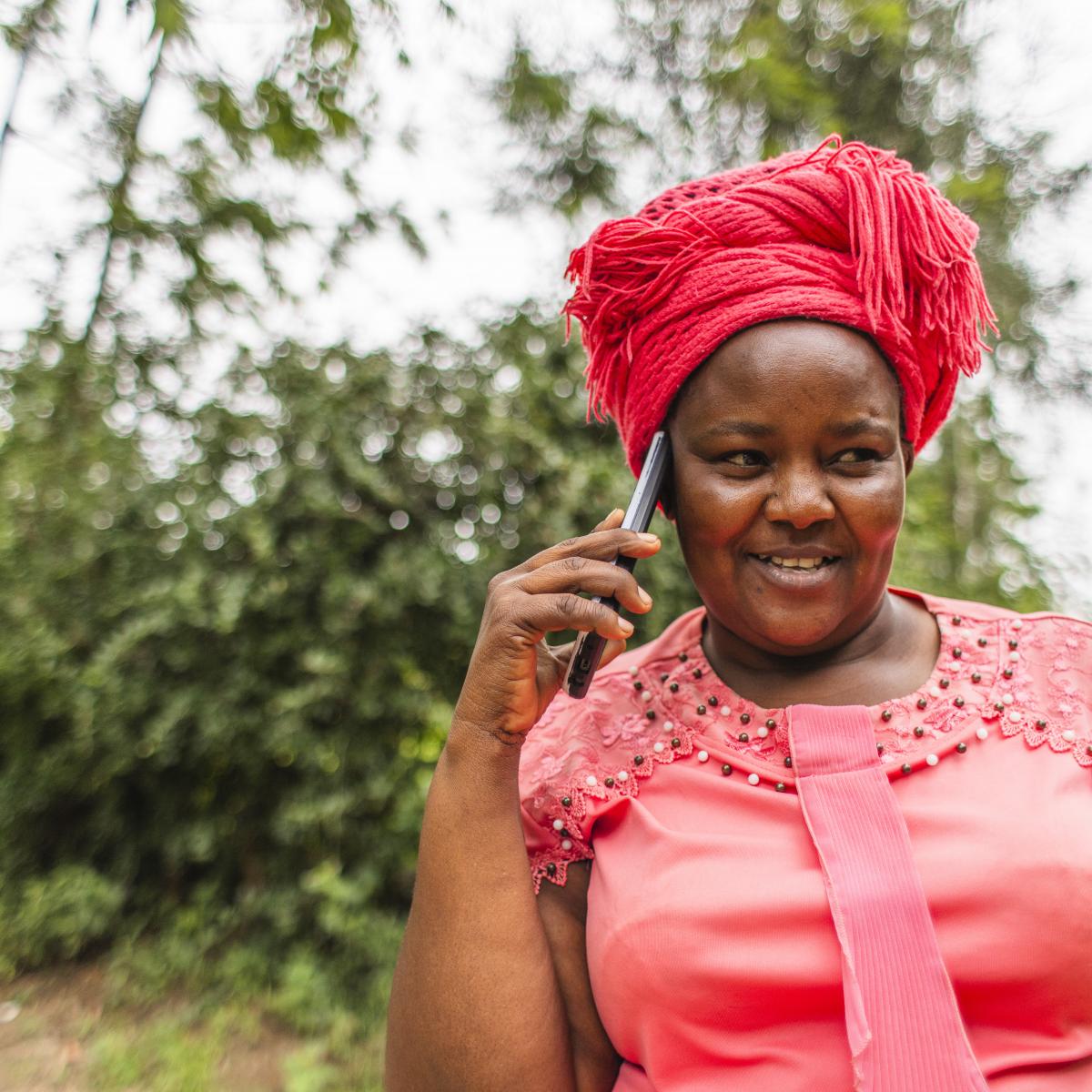
Now she says her business has doubled.
“Many women,” Ruth says, “kept wondering what was going on. ‘Why does this business continue to expand?’ ”
Her secret turned out to be the smartphone.
She prepares breakfast for her husband Benedict and two daughters. Her oldest son lives on his own in Nairobi about an hour's drive away.
After seeing the girls off to school, she takes the 15-minute walk to the market in the town center, meets fellow saleswomen, haggles with vendors, secures a rickshaw to transport her products, and prepares for a long market day at her meticulous stall towering with fruits and vegetables.
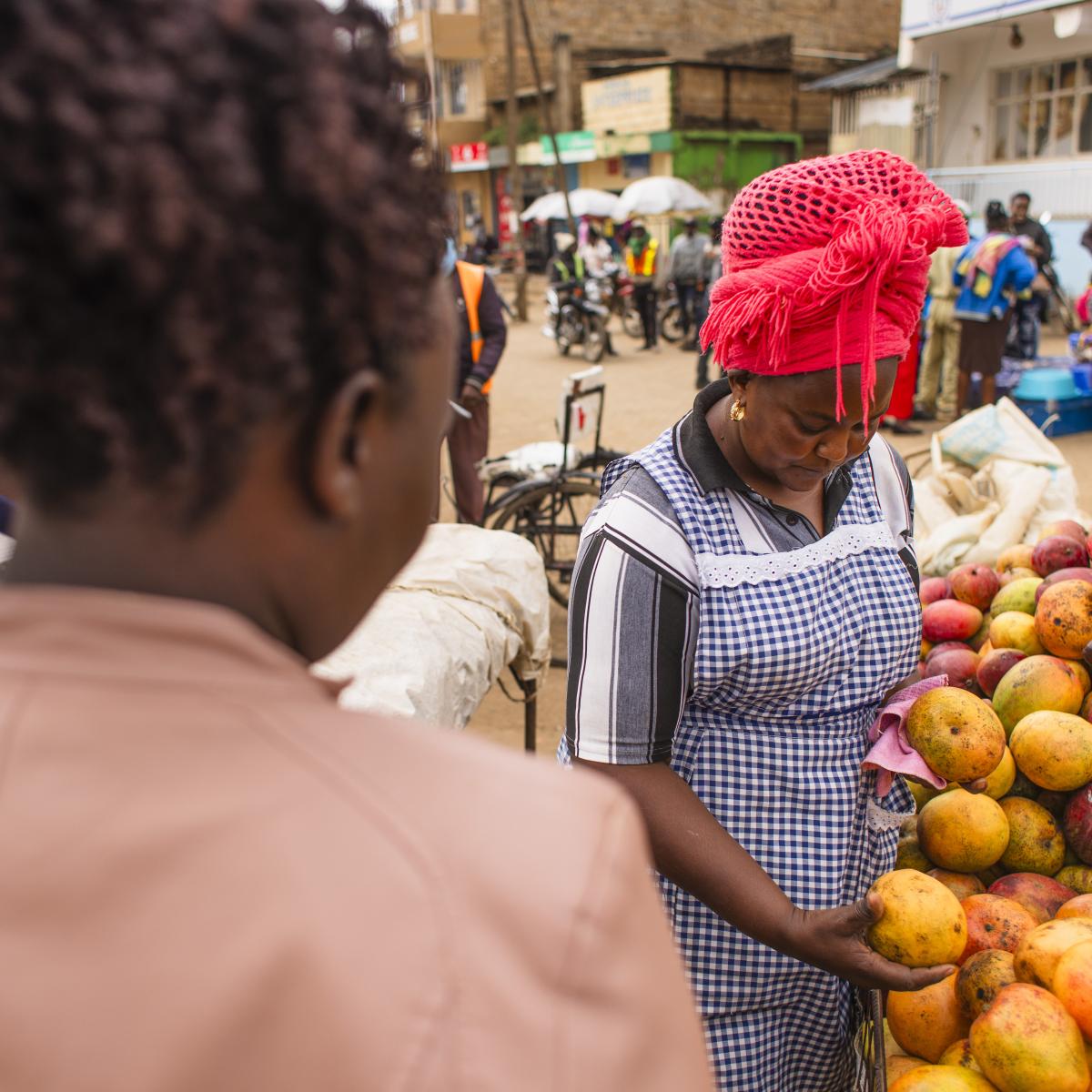
After a few more early customers queue up to her stall —some pay with cash, others opt to pay Ruth via a mobile money transfer platform, MPESA. Ruth receives a message on her phone acknowledging payment from one of her customers, the money is stored in an e-wallet on Ruth’s phone.
MPESA is a revolutionary mobile financial transactions system in Kenya offering the fastest and safest money transfer/payment solutions, and has become a very important financial application for businesses like Ruth’s.
The main market days are Tuesdays and Fridays. And with few other grocery-buying options in Tala, customers stream in and out all day.
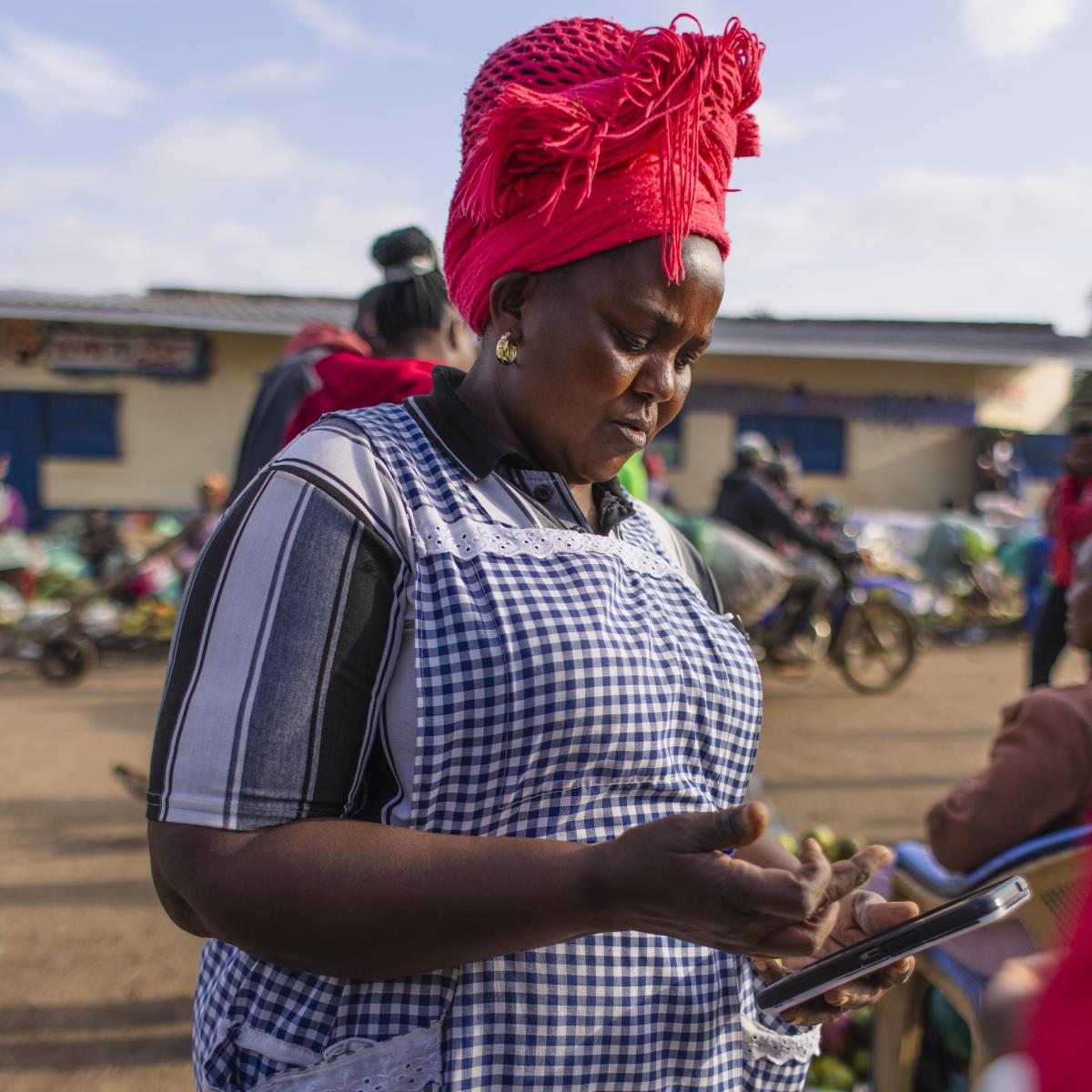
“When I opened it, it wasn't like this.”
Ruth explains this during a break in the customer arrivals and departures. “It was just small. But for now, my business has expanded.”
“Since I started doing business, my life has changed. When it comes to school fees, I help my husband in paying. When it comes to buying food, I help my husband in providing. Ever since I got this smartphone, it’s helped me greatly with my children.”
For women in low- and middle-income countries, access to a smartphone is more than an opportunity to increase their incomes. It’s communication. It’s education. It's a greater connection with their families and communities.
Ruth’s youngest daughter, who is in elementary school, mostly borrows mom’s phone to play games. But her middle child, who is in high school, uses the mobile to complete school work.
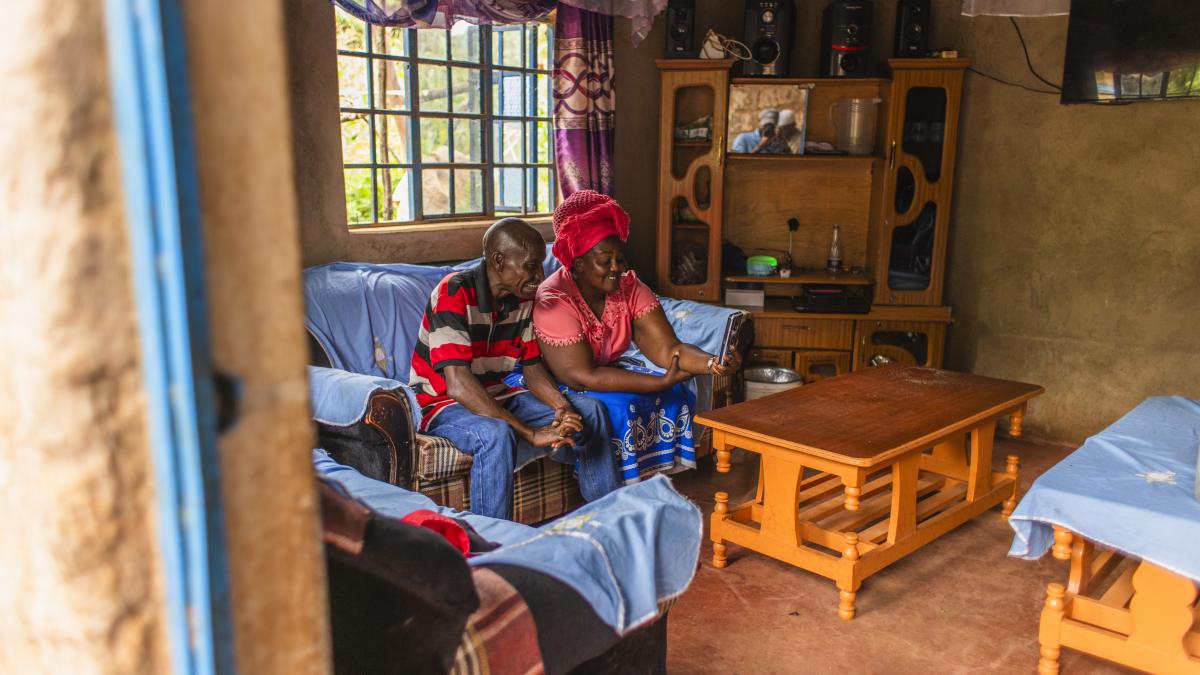
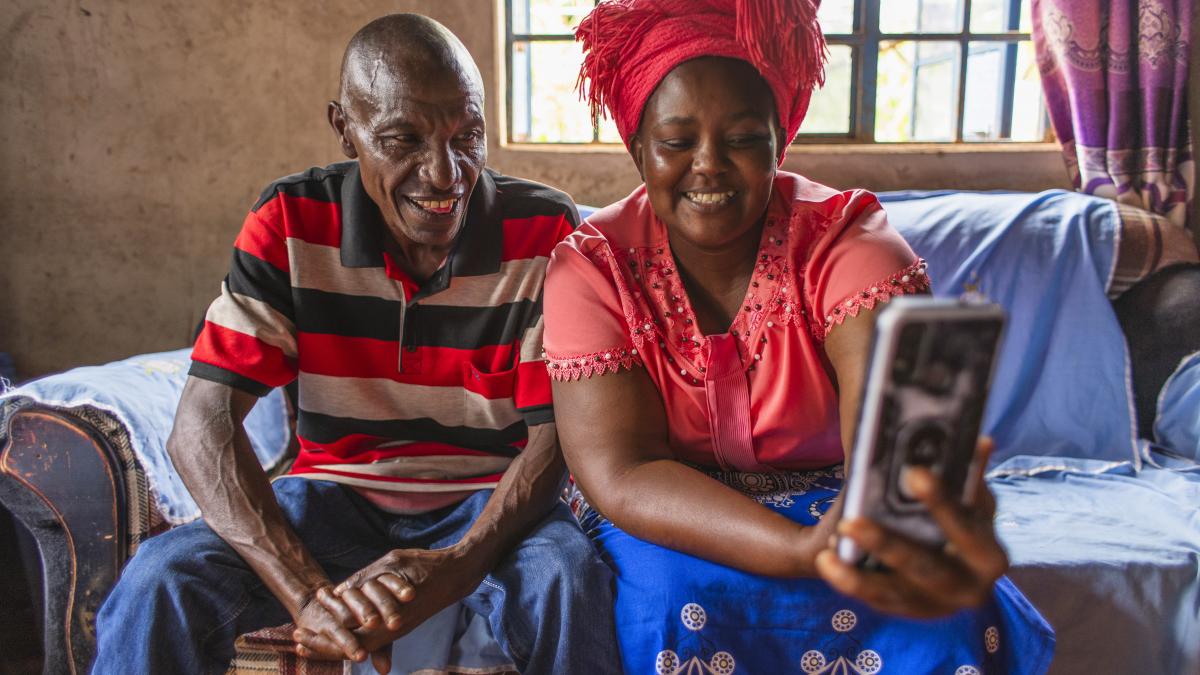
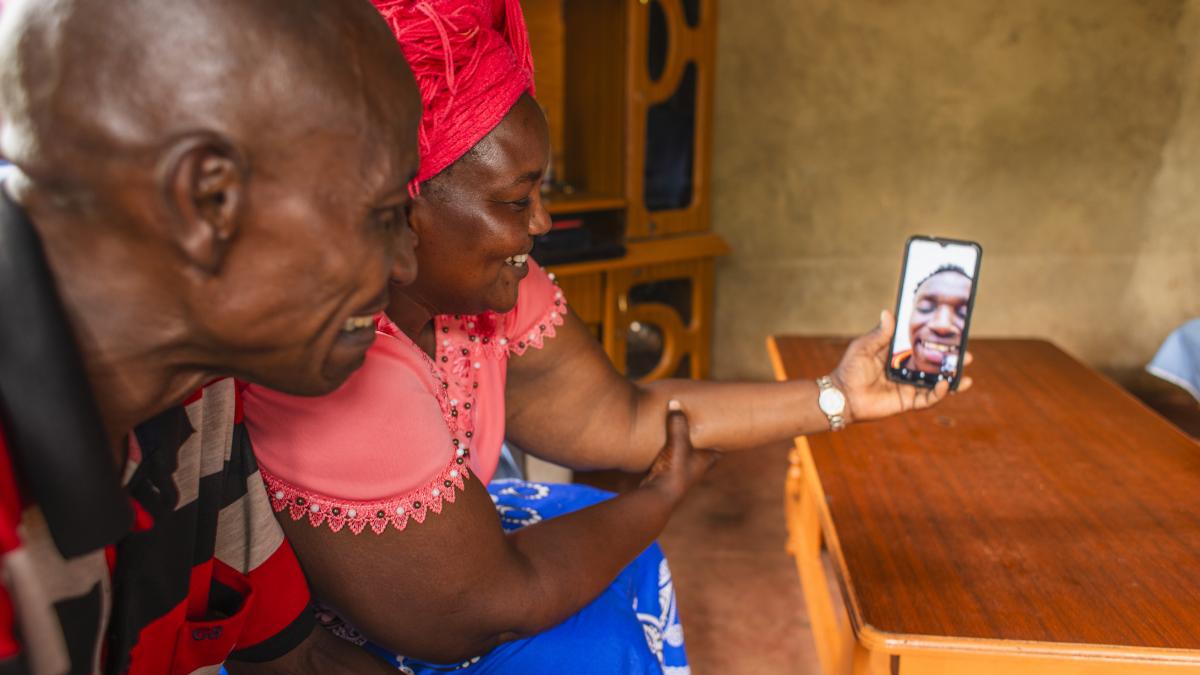
“I have a son who’s away. Whenever I feel I’ve missed seeing my child, I video call him,” she says.
“Mostly he calls me: ‘Mom, please send me 100 shillings to buy food. Mom, please send me 200 shillings,’” she adds with a smile, recounting a familiar experience to nearly every parent of a Gen Z. “So when I have it on my phone it’s really helpful.”
“Waking up early in the morning to rush to the marketplace is a very hard job,” Ruth continues. “(My children) see how I struggle to give them education. I would like for them to study and get good jobs depending on their desires.”
Elizabeth Muthoni Kauku, who is the vice chair of the chama where Ruth is a member, says that smartphones and reliable internet access open up pathways to economic independence for women.
While many of the members are financially stressed, she says, they are also creative and hard workers willing to learn new things and combine their financial might to improve their circumstances.
She recounts stories of other chama members who secured M-KOPA smartphones, learned how to access loans, and opened businesses. Elizabeth continues to use her smartphone to learn new information and skills vital to her wellbeing and for advancing her business.
“It is said in Kamba language that if you get out from your mother's compound, you grow your mind. You know how other people cook; not what your mother cooks,” she says. “So as we get out, we know we are now getting to know how other communities cook and how the other mothers cook, not the way we used to be.”
In essence, change is here. And these women want in.
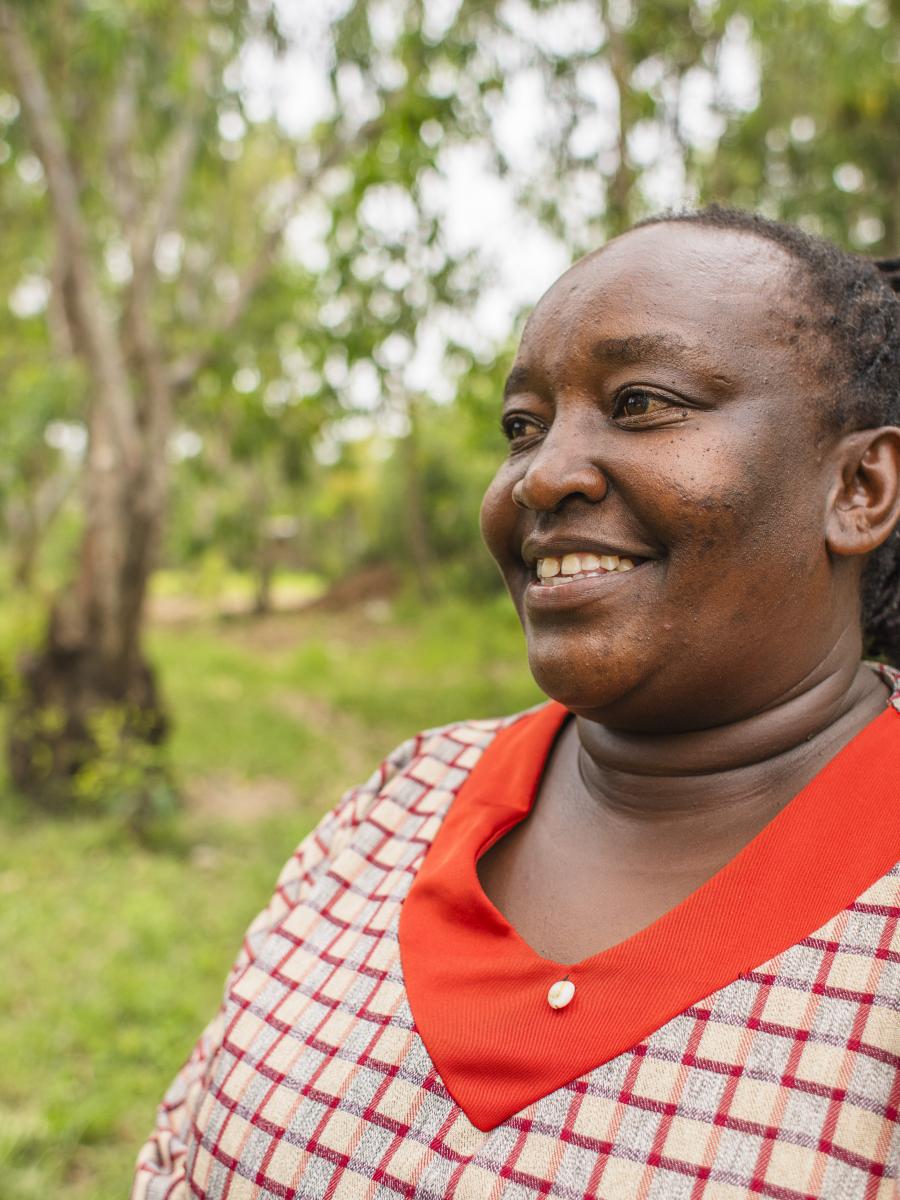
About This Story
Mobile technology has become intertwined with modern life. But women are being left behind. More than 1 billion women in low- and middle-income countries cannot access the internet and do not own or have access to a smartphone.
Bridging this digital gender divide is one of USAID’s global priorities.
The U.S. has joined with G20 countries to cut the gender digital divide in half by 2030, and is partnering with governments, corporations, foundations, and civil society to advance this goal through the Women in the Digital Economy Initiative. USAID is contributing to this effort through the Women in the Digital Economy Fund (WiDEF), a joint effort between USAID and the Bill & Melinda Gates Foundation. WiDEF will accelerate progress to close the gender digital divide by scaling evidence-based, proven solutions, including women-led solutions that improve women’s livelihoods, economic security, and resilience.
In Kenya, women are 27% less likely than men to own a mobile phone. USAID is working to change that through a partnership with M-KOPA and Microsoft Airband to increase Kenyan women’s access to affordable smartphones, advance women’s economic opportunities, and foster more inclusive internet connectivity.
Since 2012 M-KOPA has provided asset financing for over 4 million customers, 3 million of which accessed smartphones, 42% of these were women accessing for the first time. Eighty three percent of women who use their phone for business report an income increase, highlighting the importance of digital inclusion for women’s economic advancement.
Natalie Lovenburg, Senior Communications Specialist for USAID's
Gender Equality and Women's Empowerment Hub, contributed to this story.


